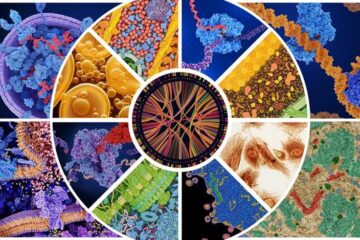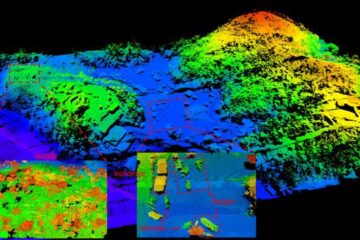Virginia Tech partner in discovery of quark interaction

It was proven that B meson decays into a lighter meson such as _ or _ with an accompanying photon. This is an evidence for bÆd transition.
Physics researchers working at the High Energy Accelerator Research Organization (KEK) Laboratory in Japan have observed a new type of interaction among the most fundamental of particles, the quark. The scientists reported at the Symposium on Lepton-Photon Interactions at High Energies, June 30-July 5 in Uppsala, Sweden, that they had produced first evidence of a beauty quark converting to the lightest of quarks, the down quark.
“Observation of this very rare phenomenon allows us to study if this occurs only through the so-called penguin process (a two-step transition wherein the beauty quark momentarily transforms into the top quark that subsequently transforms into the down quark) as predicted by the standard theory, or through some hitherto unobserved way,” said Leo Piilonen, Virginia Tech physics professor and a member of the Belle experiment’s research team.
Virginia Tech is a founding institution in the Belle experiment that studies the properties of the beauty (b) quark at the KEK Laboratory. The Belle experiment studies the decay patterns of the b-quark to search for clues on how the universe is constructed. Using a the electron-positron colliding beam accelerator, the so-called B Factory has made many important contributions to our understanding of nature at its most fundamental level, including those just announced by Professor Kazuo Abe of the KEK Laboratory in his plenary talk in Sweden. (See release posted at http://belle.kek.jp/).
Virginia Tech physics graduate student Debabrata Mohapatra worked on the analysis that led to the results. He is at the KEK laboratory this summer and will return to Blacksburg to complete his dissertation in August.
Quarks are the most fundamental constituents of material, and it is widely known that six types exist in nature. Piilonen explains that the purpose of the B Factory is to produce an enormous number of the second heaviest, called the b quark, and clarify the fundamental laws of the universe by detailed studies of its behavior. Previous findings include the discovery of many new particle states, discovery of the violation of particle-antiparticle symmetry in b quark decays, and the experimental confirmation of the Kobayashi-Maskawa theory, which characterizes the properties of quarks and predicted this symmetry violation.
In the last year, the performance of the KEKB accelerator has continued to improve, reaching the world’s highest luminosity of 1.5×1034 /cm2/sec, and delivering 390 million pairs of B and anti-B mesons to the Belle experiment. (These mesons contain the b quark or its antiparticle.) The Belle group has investigated the decays of these B mesons in detail, and has observed a new type of interaction wherein the b quark turns into one of the lightest quarks, the d quark. This phenomenon was confirmed by finding 35 events where the B meson decays into either a rho or an omega meson with an accompanying photon, and 30 events where the B meson disintegrates into two K mesons.
“Observation of this very rare phenomenon allows us to study if this occurs only through the penguin process as predicted by the standard theory, or through some hitherto unobserved way,” Piilonen said.
“This opens an exciting new window into our understanding of elementary particle physics: for example, new physics models that incorporate so-called supersymmetry also predict b to d quark transitions, and our announced observation will provide valuable feedback to these models,” he continued. “On the other hand, if we assume that the standard model holds, then our observation will provide a novel measurement of one of the coarsely measured parameters in the Kobayashi-Maskawa theory (Vtd), and lead to a more complete understanding of the standard model.”
Media Contact
More Information:
http://www.vt.eduAll latest news from the category: Physics and Astronomy
This area deals with the fundamental laws and building blocks of nature and how they interact, the properties and the behavior of matter, and research into space and time and their structures.
innovations-report provides in-depth reports and articles on subjects such as astrophysics, laser technologies, nuclear, quantum, particle and solid-state physics, nanotechnologies, planetary research and findings (Mars, Venus) and developments related to the Hubble Telescope.
Newest articles

A universal framework for spatial biology
SpatialData is a freely accessible tool to unify and integrate data from different omics technologies accounting for spatial information, which can provide holistic insights into health and disease. Biological processes…

How complex biological processes arise
A $20 million grant from the U.S. National Science Foundation (NSF) will support the establishment and operation of the National Synthesis Center for Emergence in the Molecular and Cellular Sciences (NCEMS) at…

Airborne single-photon lidar system achieves high-resolution 3D imaging
Compact, low-power system opens doors for photon-efficient drone and satellite-based environmental monitoring and mapping. Researchers have developed a compact and lightweight single-photon airborne lidar system that can acquire high-resolution 3D…





















